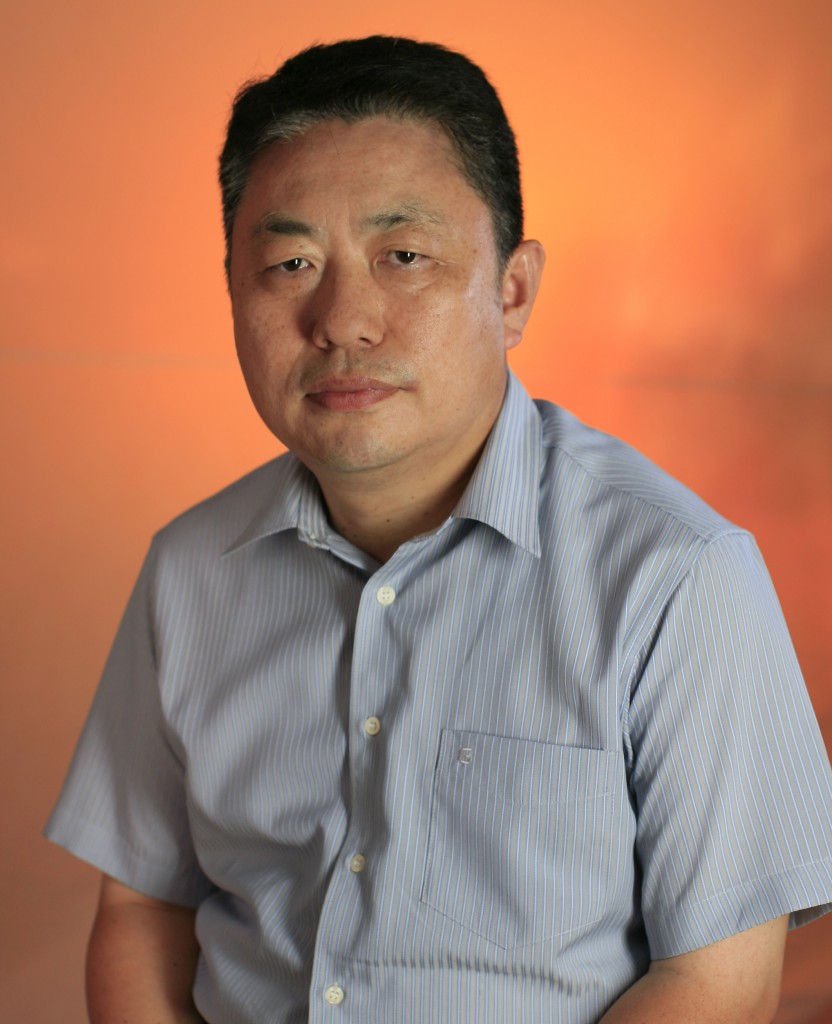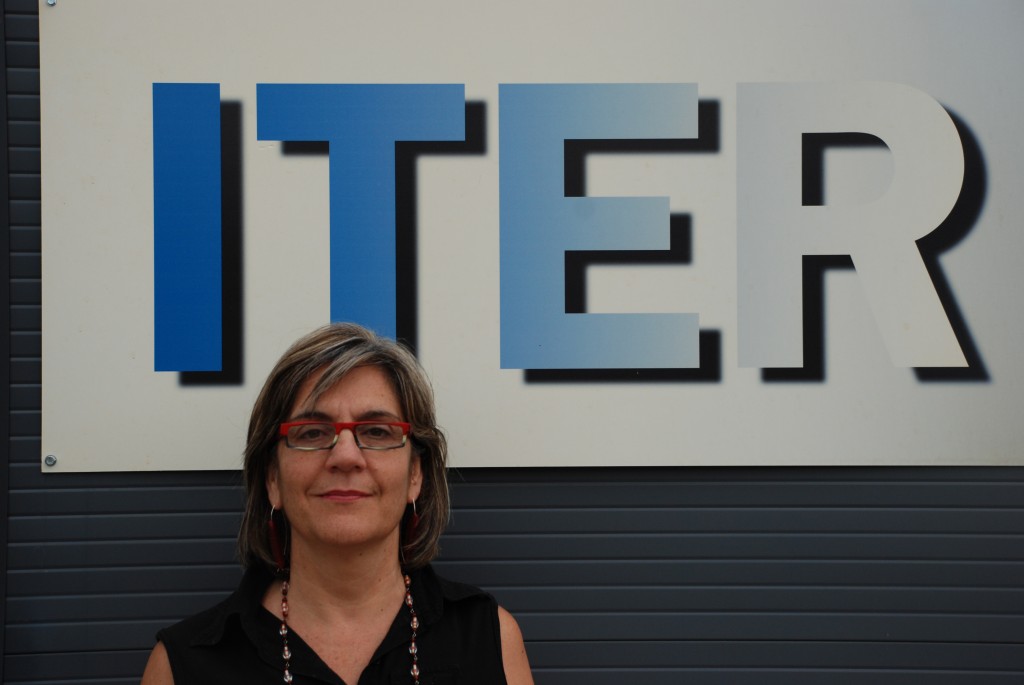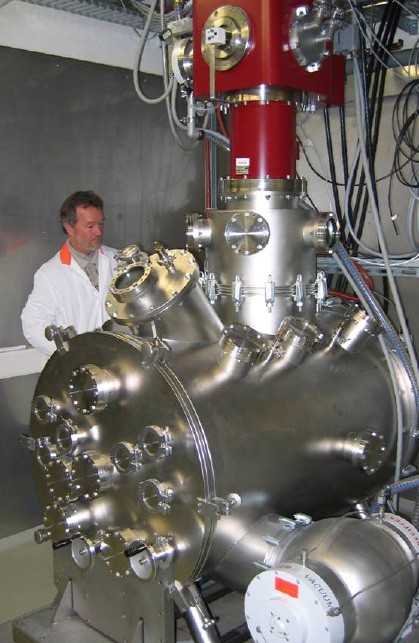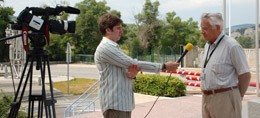Being host to ITER is an honour, a commitment and a great pleasure. We are doing our best, here at CEA Cadarache, to accommodate the Organization, assist it by providing services and support, and making its people part of our community.
The relationship we have built up with ITER over the past two years is a strong and trusting one. Every month, I meet with Kaname Ikeda and Norbert Holtkamp to discuss current issues. These issues span a very wide range, from organizing access to the various conference facilities at the Chateau to the specific skills we can bring to the programme. To me, they all come down to one question: How can we serve ITER the best we can?
We do it in all kinds of ways, big and small. Agence ITER France, which is part of CEA, is in charge of the construction site; we interfaced with the French Agence de Surete Nucleaire (ASN) in the early stages of the programme, and we keep contributing our expertise for matters related to safety regulations; we lay the ground, along with Aix-Marseilles universities, for the academic training of a new generation of fusion scientists; we bring to ITER our long experience in the engineering, organization and running of "big scientific programmes"...
There are tremendous benefits in this cooperation. With ITER, and along with our own programmes, such as the research reactor RJH, which will be operational in 2014, the new Cabri water loop and Tore Supra, Cadarache stands out as the largest civilian nuclear research platform in the world.
This is something we can all be proud of. Here at Cadarache, whether we work for ITER or CEA, we all share a common goal, which is to provide more efficient and more environmentally responsible energy sources. Few challenges, in today's world, are more meaningful and exciting.
The goal is — virtually — pinned on every wall: 26 Procurement Arrangements are in the pipeline scheduled to be signed by the end of this year. Amongst them is the real big bundle, the ITER Vacuum Vessel with all its interfaces including the integration of the ELM control coils. In order to fulfil this ambitious task, literally almost all available hands are working on the completion of the design models and the CAD drawings.
Currently, there are 46 designers working in the Mechanical Design Section of the ITER Design Office and 29 in the Plant Design Section. Nine more designers from the companies Assystem and Jacobs Ltd. have recently joined to work together on the Preliminary Architectural & Engineering Design Services for the different buildings and technical groups. Another 26 people work in the Design Office Configuration Control Section. 9 of them support Stefano Chiocchio and the Design integration Team, 4 others are involved in the CAD data exchanges with the Domestic Agencies. In total that makes 112 staff engaged in the ITER design and associated process & software infrastructure. By the end of the year this number may increase up to 158. The staff ramp up foresees another accession over the next two years leading up to 205 by 2010. The problem only is that the bulk work has to be done — now.
"The Responsible Officers have estimated that over the next 12 months we will need an additional 190 people to meet the scheduled targets", Eric Martin, Head of the Design Office, says.
Now, an additional 190 designers and engineers working in Cadarache would not only strain the already limited office space, it would also blow the IO's resources. Thus the idea is to delegate work that can be done by and within the Domestic Agencies (DAs) to them. A nice idea, indeed. But as always, the devil is in the detail: How to provide access to the network? How to organize the exchange of data? How to synchronize the work done in east and west? How to monitor and control the progress so that it is in accordance with the Organization's quality assurance procedures? "It is obvious that the stakes are high, but we have to do it", Eric Martin says. "We need all the help we can get.. We are quite optimistic as we feel very strong support from the DAs.
Back in 2006, the Design Office was already establishing regular meetings with representatives from the DAs to organize collaboration across the planet. And a big step forward was taken two weeks ago when that CAD Working Group came together in Cadarache for a three—day workshop. But again, organizing the methods of collaboration is one thing, providing the staff and the necessary budget is another. "This ship is big and difficult to manoeuvre, but we are gaining momentum", Eric Martin describes the situation.
In order to get the ship moving forward, the Indian DA which Martin says is "highly motivated" has signed a task agreement providing 30 CAD and engineering designers.
Even though they have experienced a severe budget cut, the US DA will commit 19.6 design specialists. "That is less than originally planned, but there is hope that this number will increase by the end of this year", Martin says. "Japan is also highly motivated", Martin adds. "They were the first ones to come to Cadarache in May this year to negotiate. But they can only provide 8 instead of 25 staff for the moment due to budgetary issues." Korea has signed and is ready to commit 11.7 staff effort. Russia, too, has signed and will contribute 9.02 staff. The Chinese DA is not yet officially established and can thus not sign any agreement for the time being. Also pending is the European signature under this task agreement.
In order to enable the collaboration, the ITER IT Office has created a "collaborative network" that allows synchronized database applications. For example, if a designer on the other side of the Atlantic modifies a minor detail of the upper launcher, his counterpart on this side will be able to see the modifications. A CAD data base replication system has already been installed between Cadarache and the US and was successfully tested 2 weeks ago. This technology will in particular allow the US—DA and the IN—DA to redesign the ITER Cooling Water System, sharing the ITER database and taking into account the numerous interfaces.
Once the Design Offices are established within the DAs, design coordinators from each DA will be invited to work in Cadarache. "At the moment, this is just an idea", Eric Martin explains. But he and the CAD working group members from the seven DAs are convinced that this is a very good solution to build up knowledge, to get used to each others' working routines and — finally— to achieve smooth and efficient collaborative operations.
Lina, although Spanish, was born and lived in Casablanca until she went to university in Moscow. So she speaks French and Russian almost as fluently as her native Spanish. She left Moscow with a Masters in physics and mathematics, specialised in plasma physics. Back to Spain, to teach physics in a French high school in Madrid, then on to do her PhD thesis on the subject of runaway electrons at the Universidad de Complutenze in association with the Spanish fusion laboratory CIEMAT. She worked at CIEMAT from 1982-2007 and started work on the ITER project in 2001 preparing for Europe both the Site candidature at Cadarache and the one for Spain.. After passing through Barcelona before it became F4E she joined ITER in September 2007.
Lina's title is Head of Safety Control Section, one of those groups that has to be independent of all the technical departments, because it acts like an auditor (Article 9 of the French "Quality Order 1984, Concerning Basic Nuclear Installation design, construction and operation quality) checking that everything ITER proposes to do fits with the international and French regulations for an "Installation Nucleaire.de Base, INB" as ITER is categorised (Mainly the "13 June 2006 law on transparency and security of nuclear materials", the so called TSN law)
Together with her colleague Jeong Bae Lee (an engineer who has worked for the nuclear regulator in Korea) physicist Lina's task is not only to act as an "internal regulator" but also to act as the official interface with the ASN (the French nuclear safety regulatory body) to provide in particular the documents of the Licensing Process to justify and demonstrate that what ITER is doing complies with regulations on nuclear safety, radio-protection, nuclear waste and materials. In addition, they have to put in place training on safety and related issues and instill a safety culture in the ITER Organization. They will also provide technical support for preparation for the CLI (the Commission Locale d'Information) where ITER will meet its local politicians and public. It's a small team for such a large task, but Lina is hopeful that more staff can be recruited in the future.
|
The IO now has a new official postal address:
ITER Organization
CS 90 046
13067 Saint Paul Lez Durance Cedex
France
Please use this in the future on any ITER stationery.
For those who are wondering, "CS" is an abbreviation for "Course Speciale."
The IO has also just been granted its corporate identity number by the French authorities.
The SIRET ID of 14 digits, that includes a SIREN number of 9 digits is the necessary identification in France for a company, or a legal entity such as ITER. This number will be used in all legal and business transactions, such as financial and contractual documents.
For more than 20 years the Forschungszentrum Julich, Germany, has undertaken fundamental research in the plasma wall interaction field; this area also comprises the development and testing of Plasma Facing Components (PFC) under realistic operational conditions. All these activities are strongly focussed towards the needs of ITER. Major material candidates under investigation are multidirectional carbon fibre composites (CFC) as well as different beryllium and tungsten grades (monolithic materials and coatings) to be used as armour for actively cooled in-vessel components.
Materials research at FZJ is based on two powerful and extremely flexible electron beam test facilities which are capable of simulating all the thermal loads that are expected to occur in ITER or other future magnetic confinement experiments. This unique test equipment is installed in a hot cell laboratory which allows complex high heat flux tests with irradiated or toxic materials. Detailed analyses have been performed to determine the thermal fatigue life time of actively cooled high heat flux components under cyclic quasi-stationary thermal loads up to 20 MW/m2. Transient thermal loads with extreme power densities in the GW/m2 range and pulse durations of a few milliseconds or shorter are applied to simulate Edge Localized Modes (ELMs) or abnormal events such as plasma disruptions and vertical displacement events.
Substantial material degradation is expected to occur under neutron irradiation, although the integrated neutron fluence in ITER is still moderate if compared with future fusion reactors, i.e. in the order of ~1 dpa for the First Wall and a tenth of dpa for the divertor. To provide evidence that plasma facing components in ITER will not show any unacceptable neutron-induced degradation, systematic irradiation studies have been performed in material test reactors with ITER-relevant neutron induced damage level. Irradiated test specimens and small-scale modules have been analyzed in a comprehensive test campaign. From these tests it became evident that in particular carbon based materials are extremely sensitive and show a significant decrease in thermal conductivity even at rather moderate neutron doses. As a consequence, actively cooled high heat flux components with CFC-armour tend to overheat if neutron-irradiated and, therefore, can only operate up to the early stage of the tritium phase. This is in line with the present divertor armour strategy, which foresees a switch to a full-tungsten divertor before entering into the nuclear phase of ITER operation. On the other hand, tungsten armoured plasma facing components are affected only marginally in the so-called "monoblock" geometry. Today this design option represents the most robust design solution for high heat flux components which is good news for ITER, and, maybe, also for future fusion devices such as DEMO.
|






